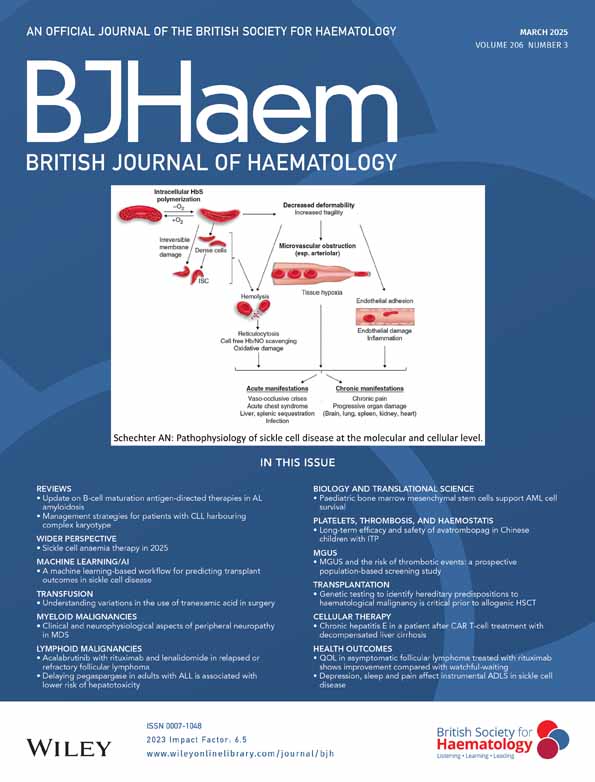Dutcher bodies and Russell bodies in a case of t(11;14) multiple myeloma
Co-first authors: Jing Wu and Wei Cai.
A 65-year-old woman presented with back pain. Serum immunofixation electrophoresis demonstrated immunoglobulin G (IgG) kappa type monoclonal protein. Bone marrow aspirate showed 41% abnormal plasma cells with different sizes, regular or irregular nuclei, most of which contained pink or colourless Dutcher bodies overlying nuclei entirely or partly (upper images, Dutcher bodies indicated by black arrows, Wright stain, ×100 objective) or/and Russell bodies within cytoplasm (upper images, Russell bodies indicated by red arrows). Bone marrow biopsy revealed pink Dutcher and Russell bodies in haematoxylin and eosin stain (bottom left image). Flow cytometry analysis showed the plasma cells to be clonal (bottom middle and right images, red: plasma cells). Cytogenetic analysis displayed an abnormal karyotype: 45,X,-X,t(11;14)(q13;q32)[4]/46,XX[16]. Overall findings were consistent with t(11;14) multiple myeloma (MM).
Dutcher bodies are now known as immunoglobulin inclusions overlying or invaginating into nuclei with no essential differences with Russell bodies.1 This case shows Dutcher and Russell bodies—uncommon morphological features most commonly seen in abnormal plasma cells. Literature search shows that Dutcher bodies in MM are highly associated with t(4;14) and IgA isotype, with the tendency of poor prognosis,2 whereas this case involved IgG-kappa isotype and t(11;14) translocation. The correlation of Dutcher and Russell bodies with both immunoglobulin heavy chain gene (IGH) rearrangement caused by chromosome 14 translocation calls for further study.
FUNDING INFORMATION
This work was supported by the Scientific and Technological Research Program of Chongqing Municipal Education Commission (KJQN202000443).
ETHICS STATEMENT
Not applicable (no ethical approval was necessary for this case).
PATIENT CONSENT STATEMENT
Not applicable (no privacy of the patient is involved and no photographs of the patient or any parts will be published).





